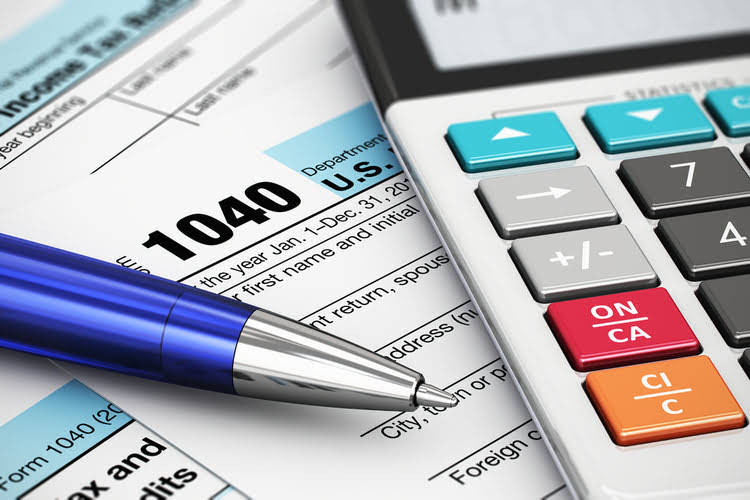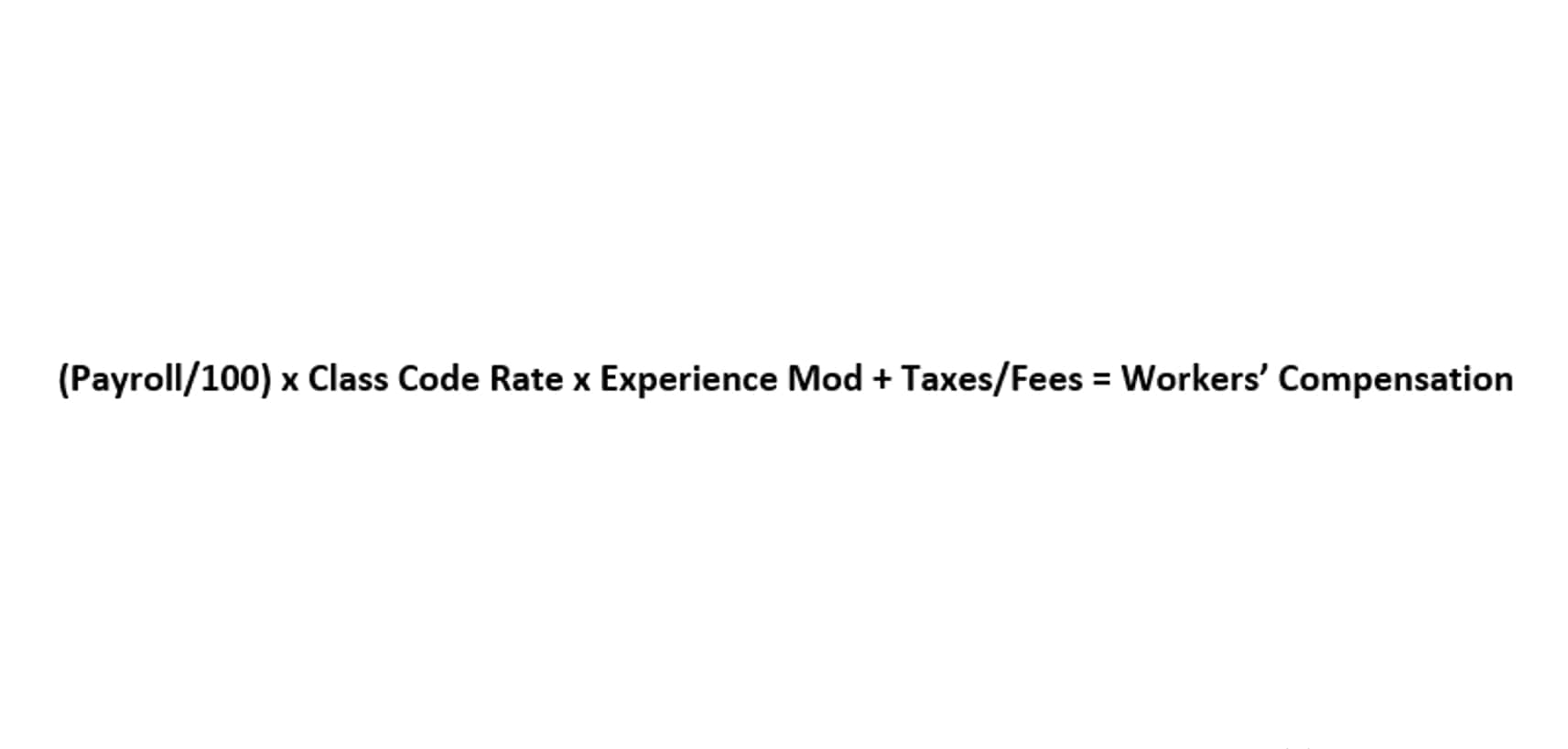In The News.
Lorem ipsum dolor sit amet, consectetur adipiscing elit. Ut et elementum elit. In quis justo sagittis, porta metus eu, volutpat risus. Nullam ac semper purus.
- February 21, 2025
- By admin@zisa
- 0 Comment
The difference between product costs and period costs

For example, if a forecast indicates an upcoming increase in utility rates, a company can budget for these higher costs in advance or implement energy-saving measures to mitigate the impact. Additionally, businesses must be agile in their pricing strategies to respond to fluctuations in period costs. For instance, a spike in rental expenses due to market changes would necessitate a reevaluation of pricing to ensure that the increased costs do not erode profit margins. This agility helps businesses remain competitive and financially healthy in a dynamic economic environment.

What is Window Dressing of Financial Statements?
A manufacturer may pay $5,000 per month in rent for its factory, which is a period cost. The rent expense is recorded on the income statement each month, regardless of how many units are produced. They are incurred during an accounting period regardless of the volume of goods produced or sold. This approach ensures that financial statements accurately reflect the operational costs of a business for a given reporting period. Their direct expensing on the income statement provides a clear view of the non-manufacturing costs required to run the business.
- Fixed cost is treated as a time cost and charged to the Profit and Loss Account.
- A product cost is incurred during the manufacture of a product, while a period cost is usually incurred over a period of time, irrespective of any manufacturing activity.
- Service companies use service overhead, and construction companies use construction overhead.
- Businesses invest in advertising to reach a wider audience and generate interest in their offerings.
- Branding and design expenses are for branding activities, logo design, packaging design, and brand identity development to create a consistent and memorable brand image.
- Period costs are recorded as expenses on the income statement in the accounting period in which they are used or incurred.
- While the basic service charge remains fixed, the overall utility bill can increase or decrease based on consumption.
Are Period Costs Considered Liabilities?
Common methods of indirect allocation include the use of predetermined overhead rates or activity-based costing (ABC) systems. Controlling overhead and fixed expenses is essential for businesses to improve profitability. A company’s ability to manage period costs effectively can have a significant impact on its overall profitability. To solidify your understanding of what are period cost, let’s contrast them with product costs.

Examples of Period Costs
Period costs can be further classified into different categories based on their nature and purpose. Some common of period costs include selling and marketing expenses, administrative expenses, and research and development costs. Period costs are incurred to support the day-to-day operations of a business and are necessary to keep the business running smoothly. These costs are not directly traceable to a specific product or service, but HOA Accounting rather contribute to the overall functioning of the organization. They can be further categorized into selling and marketing expenses, administrative expenses, and research and development costs.
Download CFI’s Free Product Costs Template
Because period costs are expensed immediately, they directly affect the company’s profitability for that accounting period. Understanding how businesses track and manage expenses is crucial for profitability and sound financial decision-making. This guide focuses on what are period cost, providing a clear definition, relatable examples, and a breakdown of how these costs differ from product costs.
Comparing Product Costs and Period Costs
These costs are essential for businesses to operate, promote their offerings, and provide a conducive work environment for their employees. By analyzing and managing these costs effectively, businesses can make informed decisions, improve profitability, and support their overall growth and success. Product costs, also known as inventoriable costs, include direct materials, direct labor, and manufacturing overhead. These costs are related to the creation of products and are considered assets until the products are sold. On the other hand, period costs are expensed in the period in which they what is a period cost in accounting are incurred and are not tied to specific products. In summary, period costs are the expenses incurred by a business over a specific time period for non-production related activities.

- Understanding product costs is also important for internal decision-making, such as setting appropriate selling prices for products and developing budgets for production.
- If a company has fixed costs of $10,000, a contribution margin of $20 per unit, and a target net income of $5,000, it must sell 750 units to reach that profit.
- By analyzing these costs, businesses can identify opportunities for cost-saving measures and streamline administrative processes.
- Every company wants to make sure that their operations are generating enough revenue to cover all costs and still have a healthy profit margin.
- They will not be expensed until the finished good are sold and appear on the income statement as cost of goods sold.
- In contrast, period costs are not attached to products and are not part of inventory valuation.
Period costs include various expenses related to business operations that are not directly tied to production. Period costs are costs that cannot be capitalized on a company’s balance sheet. In other words, https://clinicakaelumneurocenter.com/charts-of-accounts-for-an-auto-repair-shop/ they are expensed in the period incurred and appear on the income statement. For instance, managers of consumer goods companies such as Procter & Gamble and Anheuser-Busch prefer to allocate the high expense of advertising to a certain product. If it is a product cost, determine if the cost is a direct material or direct (touch) labor.
- Like a traditional income statement, the contribution margin income statement reports an organization’s revenue and expenses for a specified period of time.
- An assembly line worker putting together electronics or a carpenter crafting furniture are examples of direct labor.
- Product costs, on the other hand, are capitalized as inventory on the balance sheet.
- A period cost is charged to expense on the income statement as soon as it is incurred.
- To solidify your understanding of what are period cost, let’s contrast them with product costs.
- This additional information is needed when calculating the break even sales level of a business.
However, not all Period Costs can be directly allocated, especially those that benefit multiple cost objects simultaneously. Ever wondered how businesses track and manage the various expenses they incur while keeping their operations running smoothly? From paying employee salaries to covering utility bills and marketing expenses, Period Costs encompass a wide range of expenditures necessary for day-to-day business operations. If a selling, general and administrative (SG&A) expense is prepaid, the prepaid portion will be reported as a current asset. When the prepaid expense expires, it will move to the income statement and become part of that period’s SG&A expenses. “Period costs” or “period expenses” are costs charged to the expense account and are not linked to production or inventory.
What Are Period Costs
Accountants treat all selling and administrative expenses as period costs for external financial reporting. Distinguishing between period costs and product costs is essential for proper financial reporting and analysis. Product costs, also known as inventoriable costs, are directly linked to the manufacturing or acquisition of goods intended for sale.
About admin@zisa
Archives
- October 2025
- September 2025
- August 2025
- July 2025
- June 2025
- May 2025
- April 2025
- March 2025
- February 2025
- January 2025
- November 2024
- October 2024
- September 2024
- August 2024
- July 2024
- April 2024
- February 2024
- January 2024
- December 2023
- November 2023
- October 2023
- September 2023
- April 2023
- March 2023
- February 2023
- October 2022
- August 2022
- January 2022
- April 2021
- September 2020
- July 2019
- June 2019
- May 2019
- April 2019
- March 2019
- February 2019
- December 2018
- June 2014
- May 2014
Categories
- ! Без рубрики
- .gruporcv.es
- 1
- 1bet5
- 1GullyBet
- 1win Azərbaycan
- 1xbet1
- 1xbet2
- 1xbet3
- 1xbet4
- 1xbet7
- 1xSlots
- 1xSlots Casino
- 1xSlots Casino Argentina
- 1xSlots Casino Online
- 2
- 2Swipey AI
- 4
- 4friends.ru 50
- 4itok.ru
- 515santacruz.com3
- 5avto.ru 1000
- A new company in the German loyalty market: how to survive among large corporations using coupons
- a16z generative ai
- access-bet.com.ng x
- adobe generative ai 2
- Adrenaline Online Casino
- afyonsosyetepazari.com 2
- AI News
- Allumino Pietra
- almas-barbershop.de
- amminex.net 2
- ancor10
- ancor100
- ancor200
- ancorallZ
- ancorallZ 1000
- ancorallZ 1250
- ancorallZ 1300
- ancorallZ 1500
- ancorallZ 1500_2
- ancorallZ 20
- ancorallZ 2000
- ancorallZ 2500
- ancorallZ 3000
- ancorallZ 50%
- ancorallZ 750
- ancorallZ 776
- ancorallZ 800
- ancorallZ 900
- ancorallZ dop
- ancorallZ201
- ancorZ 1000
- ancorZ 1500
- ancorZ 2500
- ancorZ 500
- ankaratarotfali.com 1
- Announcements
- antalyaerenhali.com 2
- apolonio.escasinos-con-deposito-minimo-1-e
- Aqua & Hammered Tiles
- Aqua Diamond Tiles
- aquaservice-alicante.es
- aquipesca.com z2
- arkhpva.ru 500
- articles
- atlas-export.c
- augustent.com 2
- Aviator Game
- Aviator Predictor
- axiomaltd.ru 1500
- Bakırköy Escort, Ataköy Escort
- Bamboo Art
- bambturkiye.com 2
- bancorallZ
- bancorallZ 1250
- bancorallZ 500
- bancorallZ240
- bancorZ 2500
- bashpirat.ru 2000
- bc-game-ng.ng2
- bc-game-ng.ngen-ng x1
- bcg4
- bcgame1
- bcgame2
- bcgame3
- bcgame4
- bedava-slot-oyna.org 1000
- bedava-slot-oyunlari.com 1500
- beregaevo.ru 36
- berkeleycompassproject1
- berkeleycompassproject2
- Best online betting sites and bookmakers in Ghana
- Best Online Gambling Platforms
- bestappstrading
- besyohocam.com 1
- bet1
- bet2
- bet3
- Betsafe
- betspecial.co.uk 1
- betwinner1
- betwinner2
- betwinner3
- betwinner4
- bezflash.ru 5
- biolmarket.ru
- blackandyellowotakugamers.com c
- blog
- bomboneslupita.com
- Book Of Ra
- Book of Ra Classic
- Bookkeeping
- bootstrap-3.rucss.php 900
- brunch-cafe.ru
- brunch-cafe.ru1
- brut-club.ru 1500
- Buy medicines online without prescription
- calculadora
- Casino
- Casino Online
- Casino online y apuestas deportivas en línea
- casino1
- casino1-1
- casino10
- casino10-1
- casino11
- casino13
- casino14
- casino15
- casino16
- casino17
- casino18-1
- casino19
- casino2
- casino21
- casino22
- casino23
- casino24
- casino28
- casino29
- casino3
- casino31
- casino4
- casino5
- casino6
- casino7
- casino8
- casino9
- CATET Empowers Global Industrial Lifting Solutions
- cccituango.co
- cccituango.co 14000
- cerkezkoyisilanlari.com 1500
- chipmax.in4
- Chromo Art
- citybike-nordhorn.de
- cityoflondonmile1
- cityoflondonmile2
- cityoflondonmile3
- Cloud mining
- Clubhouse Casino
- Cocktail Stripes
- çok-kazandıran-slot-oyunları.net 1000
- Color
- Coolbet
- cossac.org
- Crazy Time
- Cryptocurrency service
- csb-online.ru 500
- Customer Relationship
- dafbet.neten-inmobile-app x1
- danieldelavega.com.ar c
- detsad-51.ru 500
- developmentspb.ru 150
- Digital Coupons As The Best Solution For Customer Retention
- Discount Coupons As A Smart Customer Retention Tool
- DISCOUNT COUPONS: ENGAGEMENT WITHOUT TARGETING COSTS
- dkmarino.ru 2000
- dmagri.in
- dogakentkres.com 1
- domovar-shop.ru 600
- Doradobet
- Doradobet App
- dou9ustilimsk.ru 30
- doy-ckazka.ru
- durmusaydemir.com 1000
- dvsl.in c2
- ekb-banki.ru 2500
- elagentecine.cl
- en-kazanl-slot-oyunlar-66b19ona.net 1000
- esportnow_legal
- esportnow_online
- esqueleto-explosivo
- etopechen.ru 500
- exbroker1
- exness2
- exness3
- exoneit.de
- Facebook Casino Games
- Fairspin-casino
- farma3
- farma4
- farmacia1
- farmacia2
- fckh.ru 1500
- fcommunity.ru
- FinTech
- fishingbaits.ru 2000
- flagshipuniversity.ru 2
- Forex Trading
- Forma Metallo
- French Path
- Fubet
- galernaya20.ru 600
- gambling
- gates-of-olympus-oyna-demo.com 1000
- gdouuds.ru 500
- gel-school-19.ru 300
- General News
- ggokpoker-ru.ru
- ggpoker-ru.ru
- Grand Murano
- Grand Sophie
- greekgirlscode.com
- grodno.staybook.by
- haciozkan.com 1000
- Halkali Escort Services
- Halkalı Escort Bayan
- Home improvement services
- hoteldelafuente.com
- how does generative ai work
- hrishikeshpathak.com 2000
- i-kalendar.ru 500
- i-ksiazka.pl
- icestupa1
- icestupa12
- icestupa13
- icestupa2
- icestupa3
- icestupa4
- icestupa6
- icestupa8
- inasound.ru
- infectex.ru
- infopot.ru 2500
- Inkabet App
- Inkabet App APK
- Inkabet App Descargar
- Inkabet App Play Store
- Inkabet Casino App
- inquisitivereader.com z3
- intellectplanet.ru 1500
- Istanbul Escort
- İstanbul Escort Hizmetleri
- isu-pb.ru 1000
- IT Вакансії
- IT Образование
- italyanmutfagihaftasi.com 2
- jaya9
- jaya91
- jaya92
- jaya9casino
- jetton 23.09
- Jetton KZ
- Jetton RU
- jetton ru 23.09
- Job Name
- kayedstudio.com
- kazandiran-slotlar.com 1500
- kazandıran-slot-siteleri.net 1000
- kazino-onlayn-reyting.xyz 2
- keflibicak.com 1000
- kentt.xyz
- kgskouskosh3.ru 4000
- kiprtravelavto.ru 900
- kistevoytrenazherpowerball.ru 1
- klgsystel.com2
- KMSAuto
- KMSpico
- komod-testfeld
- konnersant.ru 2
- koruhastabakici.com 1000
- kromatografi2023.org 2
- kurumkan.info
- kvadro-extreme.ru
- L’univers du jeu, du sport et de la crypto en 2025
- lapistaki.com 1000
- lenovo-smart.ru 2000
- LiberSave Coupons as a Customer Retention Tool for Small and Medium-Sized Businesses
- lightnovosti.ru 300
- lmgsport.pt
- luckhome.ru 2000
- lucky-star1
- lucysblueday.com
- lunarpsikoterapi.com 1000
- lusigroom.ru 500
- machintech.ru
- maisondecharme.ru 1000
- mandarin-oriental.ru
- marketpskov.ru 700
- mbdou-18-41.ru 700
- mdash.ru 170
- mebel-elegya.ru 1500
- medipekfashion.com 1000
- medmind.ru 4-8
- medreg75.ru1
- melbetcanada.org9
- mellyoitzl.org 2
- meta-park.es
- Metal Mix, Marble Metal Mix
- Metal Tiles
- metody-platnosci.pl
- minaevlive.ru
- Mines Spribe
- minoritybusinessesmatter.org2
- missionaguafria.com2
- mobil-slot.com 1500
- mobile proxies
- Models
- moskovsky-vrach.rucasino 500
- Mostbet
- mostbetceska.comcs-cz x
- Multilevel Pattern
- mvclinic.ru 50
- mycardbonus.ru
- nastolki18.ru 150
- News
- News – Copy (2)
- News – Copy (3)
- nodeposit
- normel-spb.ru 2500
- NOVE
- Official Betting and Casino Website
- okggpoker.lol
- okn53.ru
- okonlineplay.live
- Omegle.fan free anonymous video chat with strangers online
- onlayn-kazino-reyting.xyz 2
- online casino
- Online casino and betting platform
- Online games and casino
- onlineplaypoker.cyou
- orthopaedic-partners.de
- otolastikbul.com 1500
- otzivorgt.ru 10
- p0kerdom.wiki
- panyteatro.com.ar c1
- Penalty Shoot Out
- pereezd.pl.ua
- photonicsperm.ru 2
- Pietra Tiles
- Pin Up
- Pin Up bahis
- Pin Up Casino
- PIN-UP
- Pinco
- Pinco Casino
- Pinco TR
- PinUp
- pinupcasinos-az.com
- pirlotv.mx c2
- Play online casino
- play-7k.live
- playpoker-ru.ru
- playpokeronline.click
- Plinko
- pocket1
- pocketoption2
- pocketoption3
- poker-doms.store
- poker.ok-play-poker.click
- poker.play-online-ok.store
- Pokerdom
- pokerdom-casino.digital
- pokerdom-cazino.ink
- pokerdom-kaz.store
- pokerdom2.guru
- pokerdom24kz.wiki
- pokerdomkaz.live
- pokerdomkazahstan.biz
- pokerplay-ru.ru
- pokervdom.info
- poland
- porngames
- posts
- premium-cashback.ru 2500
- prestamos
- primexbt1
- Project Reference
- Project Reference Grid
- Promotions & Offers
- psy-archetypes.ru 1000
- pytube.io5
- r7-kasino8.site
- r7kazino.life
- radioshema.ru
- re-movieawards.ru 500
- ready_text
- remont-certina.ru 500
- restaurante regaleira
- reyting-luchshih-kazino-onlayn.xyz 2
- reyting-luchshih-onlayn-kazino.xyz 2
- reyting-onlayn-kazino-evropy.xyz 2
- reyting-onlayn-kazino-rossii.xyz 1
- reyting-onlayn-kazino.xyz 2
- reyting-top-10-onlayn-kazino.xyz 1
- rickyscasino.org2
- ridu-store.ruonas 500
- rigged-soccer-matches.com2
- riobet5.xyz
- roulettespin
- rugorod.info 2
- salto.pk3
- samoproidet.ru 500
- samsunservisi.com 1500
- sauna-dubrava.ru 1000
- SBOBET1
- school217.ru
- sdjs.ru 1
- sdjs.ru 2
- selectorcasino.lol
- selfmadeconcrete.ru
- sevinf.ru 2
- Shape
- shkola-90.ru
- shophistoryisfun.com 3
- silvergold.hu
- sinanspor.com 1500
- Sisal Rib
- skiptonmarket.net 1000
- skovoroda-kastrulya.ru 500
- skovorodkaclub.ru 10
- slot-destek.com 1500
- Slots and betting games online
- SlotsDon Casino
- snor.rufonbet 200
- Sober Living
- Software development
- sondakikaguncelhaber.com 1
- Sophie
- sopkol.ru
- spbunesco.ru 2000
- Spin Mills Casino
- Spiral & Wave Tiles
- Square Login
- ST-4
- Standard Pattern Tiles
- Steelico
- Sweet Bonanza
- sweet-bonanza.best 2000
- sysgestionerp.cl
- t.meRiobet_mirror 2000
- tecrubekonusuyor.net 1000
- telmih.com 1000
- test-metod.ru
- text
- theedgesport.cl
- themadisonmed.com
- thenorthfacemontturkiye.com 1
- Top bookmakers et bonus en ligne
- Top Crash Games and Online Casinos in 2025
- topcricketbookies.com c1
- tourbillontime.ru 500
- trading4
- tut-boxing.ru 2000
- uaw-chrysler.com 1
- ugrapromforum.ru 2
- Uncategorized
- under-prog.ru 300
- Upcoming Events
- utkul.ru 1500
- valentina-bondareva.ru 500
- Vavada
- veshka-adm.ru 1500
- veyorum.com 2000
- victorbout.ru 500
- vinoora.ru 150
- vodka-casino-vhod-promokod.ru 5
- volnataganrog.ru 500
- volta.computer4
- vorzeit-hessen.com 3
- VPN
- vsezhivoe.ru2
- vulcn.club 2000
- vulcn.pro 2000
- vulcn.xyz 2000
- vulkn.online 2000
- Water Tiles
- WePoker
- What Should I Read Next?
- winwin24.onl
- winwin24.pro
- winwin24.quest
- winwin24.vip
- winwincasino
- wireplay
- wow-party.ru
- wsciencedirect.com 1
- wulkan.cloud
- www.betspecial.co.uk 10
- www.lepetittrianonstyle.es c
- www.prstudent.ru 5
- www.sarkparishchurch.org.uk c2
- xn—–9kcfobab0aa5cdj0ali8e4i.xn--p1ai 500
- xn—-7sb3aca9ahcif.xn--p1ai 1500
- xn--438-qdd8ah6a2fo.xn--p1ai 1500
- xn--80agvaoebnfku.xn--p1ai
- ysftesisat.com 1
- zateyashar.ru 500
- zurkastanie-marl.de
- безопасныйставрополь.рф ancorallZ 900
- захисні плівки для авто
- Лучшие казино и букмекеры онлайн
- Мелбет
- мобільні проксі
- Мостбет
- Недвижимость в Москве
- обклеювання авто у Львові
- оклейка авто в Киеве
- оклейка авто в Одессе
- Онлайн-казино Парік 24
- Плей Фортуна
- Покердом
- Покердом онлайн казино
- Рейтинг лучших казино и сайтов для ставок
- Решения для медиабаинга и арбитража
- Сasino
- спецтехника52
- Ставки на спорт і онлайн казино
- стоматологія на Оболоні
- Таро Онлайн
- Финтех
- Форекс обучение
- Фриспины за регистрацию в онлайн казино: плюсы и минусы
- Эльдорадо казино

Recent Comments